|
|
|
||||||||||||||||||||||||||||||||||||||
|
|
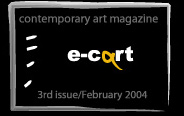 |
|
|
||||||||||||||||||||||||||||||||||||
 |
|
|
|
||||||||||||||||||||||||||||||||||||
|
|
|
|
|
||||||||||||||||||||||||||||||||||||
|
|
|
 |
|
||||||||||||||||||||||||||||||||||||
 |
|
 |
|
||||||||||||||||||||||||||||||||||||
 |
|
||||||||||||||||||||||||||||||||||||||
|
|
|
||||||||||||||||||||||||||||||||||||||
|
|
|
||||||||||||||||||||||||||||||||||||||
|
|
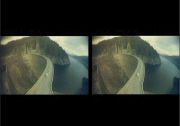 |
|
|
||||||||||||||||||||||||||||||||||||
|
|
|
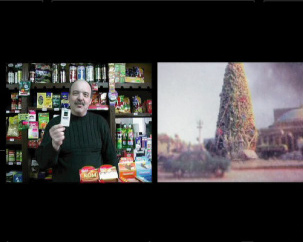 |
|
|
|||||||||||||||||||||||||||||||||||
|
|
 |
|
|
||||||||||||||||||||||||||||||||||||
|
|
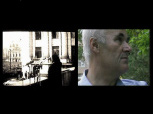 |
|
|
||||||||||||||||||||||||||||||||||||
|
|
 |
|
|
||||||||||||||||||||||||||||||||||||
|
|
|
||||||||||||||||||||||||||||||||||||||
|
|
|
||||||||||||||||||||||||||||||||||||||
|
|
|
||||||||||||||||||||||||||||||||||||||
 |
|
|
|||||||||||||||||||||||||||||||||||||
 |
|
|
|
|
|
||||||||||||||||||||||||||||||||||
|
|
|
|
|
||||||||||||||||||||||||||||||||||||
 |
|
||||||||||||||||||||||||||||||||||||||
|
|
|
||||||||||||||||||||||||||||||||||||||
|
|
|
 |
|
||||||||||||||||||||||||||||||||||||
|
|
|
||||||||||||||||||||||||||||||||||||||
|
|
|
||||||||||||||||||||||||||||||||||||||
|
|
 |
|
|||||||||||||||||||||||||||||||||||||
|
|
|
||||||||||||||||||||||||||||||||||||||
|
|
 |
|
|
||||||||||||||||||||||||||||||||||||
|
|
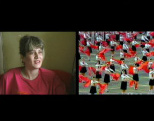 |
|
|
||||||||||||||||||||||||||||||||||||
|
|
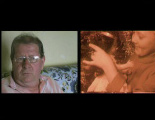 |
|
|||||||||||||||||||||||||||||||||||||
|
|
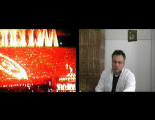 |
|
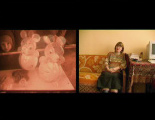 |
|
|
||||||||||||||||||||||||||||||||||
|
|
|
|
|
||||||||||||||||||||||||||||||||||||
 |
|
||||||||||||||||||||||||||||||||||||||
 |
|
|
|
||||||||||||||||||||||||||||||||||||
|
|
 |
 |
|
||||||||||||||||||||||||||||||||||||
|
|
|
|
|||||||||||||||||||||||||||||||||||||
|
|
|
||||||||||||||||||||||||||||||||||||||
|
|
|
|
|
|
|
|
|
|
|
|
|
|
|
|
|
|
|
|
|
|
|
|
|
|
|
|
|
|
|
|
|
|
|
|
|
|
|
|
|
In January 1990 I found myself admitted at the Art Academy in Bucharest.
I'm saying found myself because initially I failed, but as a revolution just
took place in Romania, The Ministery of Education decided to accept in schools
both the ones who failed with the same grade as the last admitted as well
as the ones who failed the first ones below the line. Togheter with me there
were still 10-15 admitted, I cannot recall exactly.
After 4 attempts I was admitted by a law emitted by the new guvernors. A miracle
took place, at least this is how I received the news. There were big things
taking place within the entire society and, of course, as it was just normal,
the universitary institutions were effervescent too. In the Art Academy also
there were radical changes taking place, there were meetings everyday, where
the future of the school, of the education system, of the country even, was
beeing dicussed.
Old "stained" teachers were fired, while new, "clean"
ones were brought in. In such a moment I got to be a student at the Art Academy
in Bucharest.
The first year was the most prolific, for me and I believe it was so for my
group and my year colleagues, we were working from morning till dawn. We had
a mad appetite for work. The studio was in the building on the General Budisteanu
street, at the ground floor, room no 10 and we had Nicolae Alexi as a teacher;
he, I believe, as all the professors at the graphic department, was brought
in after the revolution.The studio was 15x 10 m, in the middle of it the model
was posing and around it there were the easels. Everyone was trying to imitate
the reality as well as they could, the hand to be a hand, the eye to be an
eye, we were not asking ourselves too many questions.We were working almost
everyday after a model. It was the most beautiful period I've spent in the
Bucharest school.
Around the second year the enthusiasm and the energy started to melt and the
hours in the studio and the study of theory were replaced by empty of content
and full of alchool political and philosopical talkings, by heavy drinking
bouts sometimes.This was one of the firsts things I've found out in school,
that an artist must drink and must have a bed in the studio.
All of us from school were touched by the political events and I know I was
present at the meetings and protests on the streets. Some understood faster
than I did what it was all about and they started to deal with their personal
business, got into politics or they simply dealt with more or less lucrative
activities.
I've started to get bored especially because all the stirs never had a finallity,
they were consumed in time and toghether with them my nerves were erroding.
Slowly I came to realise that a lot of time will pass until something will
change in the Romanian society, anyway more time than I thought at the beginning,
much more.
I remember that in the third and the forth year, although having a model in
the studio, we prefered playing ping-pong or Dart each and everyday.
Our workshop smelled like a sports-hall rather than of turpentine as maybe
it should have had.They were the most difficult years for me because I felt
I was wasting my time. We were 13 in the group but rarely all of us met in
the studio and if it happened it was due to the alchool or a pingpong match.
My mother and brother left to Sweden in July 1990, they went to my father
who emigrated there in '88. Short time after their departure I've transformed
the apartment into a studio and there, with a small group of friends we held
disussions about art. There we managed to clear ourselves some things. In
school this was impossible, the teachers were outdated on by the issues, only
few of them could explain for themselves how things were, what is going on
with art. Their artistic careers were built up in a context that was no longer
alive. Until '89, obtaining the Artists Union membership ID, exhibiting at
the Simeza, Orizont galleries, at the Art annual exhibitions from the Dallas
Hall, or outside, for example in Sofia from where you could bring "Puma"
sport shoes or speakers that you could sell on Sunday at the fair, you were
a really accomplished artist.
The message was simple: all that it is "outside" is bad, and if
anything was still good, it was because of the techniques, the endowments
and the extraordinary materials that the artists "outside" had.
We were hearing these teachings when our teachers came back from a "Western"
trip. But after long talkings around a vodka bottle usually you discovered
that they did not visit museums and galleries there but fairs and fishermen
shops. Those professors with "intelectual" plies, who tried to change
something, were removed or they just didn't want to accept anymore the humilities
and the games from school and left by themselves.The atmosphere in school
was rather degrading, sad and lacked perspective. In fact, it mirrored with
details the outside of it, only at a smaller scale.
The thought that I must study one more year was terrorizing me.
In 1994 I left to Sweden to my parents and soon after I reached there I've applied at the Royal Academy of Art in Stockholm, where I was admitted straight into the third year, it being a 5 years school. So the study of the model hand and eye served me in a certain respect. The first year I've wasted trying to understand what was happening in that institution. I was feeling lost. Within a few months I've had a crisis and left with a scholarship to Bergen in Norway. After another 3 months I've came back to Stockholm. I was not understanding anything that was happening around me, I was really lost. I understood only that I had to give up the artist career because it was impossible to adapt to the new situation. In the end the crisis passed and of course I did not give up what I've started. Many, the great majority of my new colleagues, wouldn't have been able to get into the Bucharest school. There were many who didn't know how to draw a hand "correctly" but they didn't make a fuss about this either. Once I saw that one of my collegue's studio contained a desk, a chair, a fax and a telephone book. I did not understand where the easel was.
The education system was entirely different from the one I had just left.
I also have to say that each student from the second grade on received a studio.
That's how I received a separated studio of about 8x6 m - you were receiving
an amount of money for materials, there were numerous practical courses that
you could apply to: litography, serigraphy, copper engraving, monumental painting,
concrete, plastic, carpentry, photography, video, s.a.m.d. Some materials
were for free, some you had to buy but in general the school was very generous.
Everybody around me were very motivated and grimmed in their work.The fact
that the studios were separated made the contact and communication to be bad
among students.The communication was really a problem for me. Many times I
had the surprise that after having long discussions with a colleague on a
Friday evening party, on Monday morning he didn't say hello to me and maybe
didn't talk to me for months, until some day, when we met again to continue
the discussion as if nothing had happen. The will to succeed in a career made
many of them, I believe, much more selfish, more mean.This thing has a great
deal of positive aspects as, for example, a permanent state of concurence
with the ones around you. I personally didn't like this and I also don't think
it helped me too much, on the contrary, this made me very angry and scared.
I noticed that here also the backstage games were functioning, more elevated
and more subtle but equally effective. An important thing for me, maybe the
most important, was the discussions I had with different professors in my
studio. Something I miss even today is the so called "3+3", it was
a meeting of 3 students with 3 teachers in which each student had to argumentate
for 45 minutes their works while the rest were haressing with questions. This
game question-answer was very useful to me, even if it made me tremble long
before the meeting. At the same time I had the opportunity of seeing what
my collegues were doing and more important the way they thought. Intelectually
speaking it was a different level in the new school and the experience served
me alot, I was forced to explain theoretically everything I was doing. The
trouble with this is that, within this logic, anything can be motivated, for
any trifle, hours, days weeks of dicussion can be held and, not rarely, I've
attended to endless discussions, there were specialised people in this.
In these 4 years of school, 3 as a regular student and one as a special one
I've met some interesting people that I've continued my discusions with, later
on, after the school was over, we've co-operated and they became close friends.
Here I want to mention Ann Edholm who is an excellent educator and who continuosly
supported me in my work and my artistic essays. Once, when I met her in school
in the professors' room, we were just the two of us and she asked me something
that obsessed me a lot after. She asked me if art is important to me. The
question surprised me, I actually graduated the Art highschool Nicolae Tonitza
and I already graduated 4 years in the Art Academy but I've never asked myself
this question and I also didn't understand at the begining what she meant.
I mumbled an "YES" and she said that for her "art is a life
and death issue". Long time after that I laughed because, to be honest,
I considered her answer as one of the greatest "texts" of my life.
Still, with the time I understood what she wanted to say, that art is something
for real, that you have the chance to say something really important in this
world and must not miss the chance.This fear I always have when I start a
new project, the fear that I will add another painting, a photo, a movie,
to the thousands paintings, photos, movies that are produced daily in the
world.
This was the most important thing that I found out in school.
At the entrance of the Academy of Art in Bucharest there is the bust of Nicolae Grigorescu (Romanian painter b.1838-d.1907), and at the Royal Academy of Art from Stockholm, the wild boar and a lion (the symbols of the Swedish monarchy).
Stefan Constantinescu
Translation by Raluca Iulia Capota
|
|
|
||||||||||||||||||||||||||||||||||||||
|
|
 |
|
|
||||||||||||||||||||||||||||||||||||
 |
|
|
|
||||||||||||||||||||||||||||||||||||
|
|
|
|
|
||||||||||||||||||||||||||||||||||||
|
|
|
 |
|
||||||||||||||||||||||||||||||||||||
 |
|
 |
|
||||||||||||||||||||||||||||||||||||
 |
|
||||||||||||||||||||||||||||||||||||||
|
|
|
||||||||||||||||||||||||||||||||||||||
|
|
|
||||||||||||||||||||||||||||||||||||||
|
|
 |
|
|
||||||||||||||||||||||||||||||||||||
|
|
|
 |
|
|
|||||||||||||||||||||||||||||||||||
|
|
 |
|
|
||||||||||||||||||||||||||||||||||||
|
|
 |
|
|
||||||||||||||||||||||||||||||||||||
|
|
 |
|
|
||||||||||||||||||||||||||||||||||||
|
|
|
||||||||||||||||||||||||||||||||||||||
|
|
|
||||||||||||||||||||||||||||||||||||||
|
|
|
||||||||||||||||||||||||||||||||||||||
 |
|
|
|||||||||||||||||||||||||||||||||||||
 |
|
|
|
|
|
||||||||||||||||||||||||||||||||||
|
|
|
|
|
||||||||||||||||||||||||||||||||||||
 |
|
||||||||||||||||||||||||||||||||||||||
|
|
|
||||||||||||||||||||||||||||||||||||||
|
|
|
 |
|
||||||||||||||||||||||||||||||||||||
|
|
|
||||||||||||||||||||||||||||||||||||||
|
|
|
||||||||||||||||||||||||||||||||||||||
|
|
 |
|
|||||||||||||||||||||||||||||||||||||
|
|
|
||||||||||||||||||||||||||||||||||||||
|
|
 |
|
|
||||||||||||||||||||||||||||||||||||
|
|
 |
|
|
||||||||||||||||||||||||||||||||||||
|
|
 |
|
|||||||||||||||||||||||||||||||||||||
|
|
 |
|
 |
|
|
||||||||||||||||||||||||||||||||||
|
|
|
|
|
||||||||||||||||||||||||||||||||||||
 |
|
||||||||||||||||||||||||||||||||||||||
 |
|
|
|
||||||||||||||||||||||||||||||||||||
|
|
 |
 |
|
||||||||||||||||||||||||||||||||||||
|
|
|
|
|||||||||||||||||||||||||||||||||||||
|
|
|
||||||||||||||||||||||||||||||||||||||
|
|
|
|
|
|
|
|
|
|
|
|
|
|
|
|
|
|
|
|
|
|
|
|
|
|
|
|
|
|
|
|
|
|
|
|
|
|
|
|
|